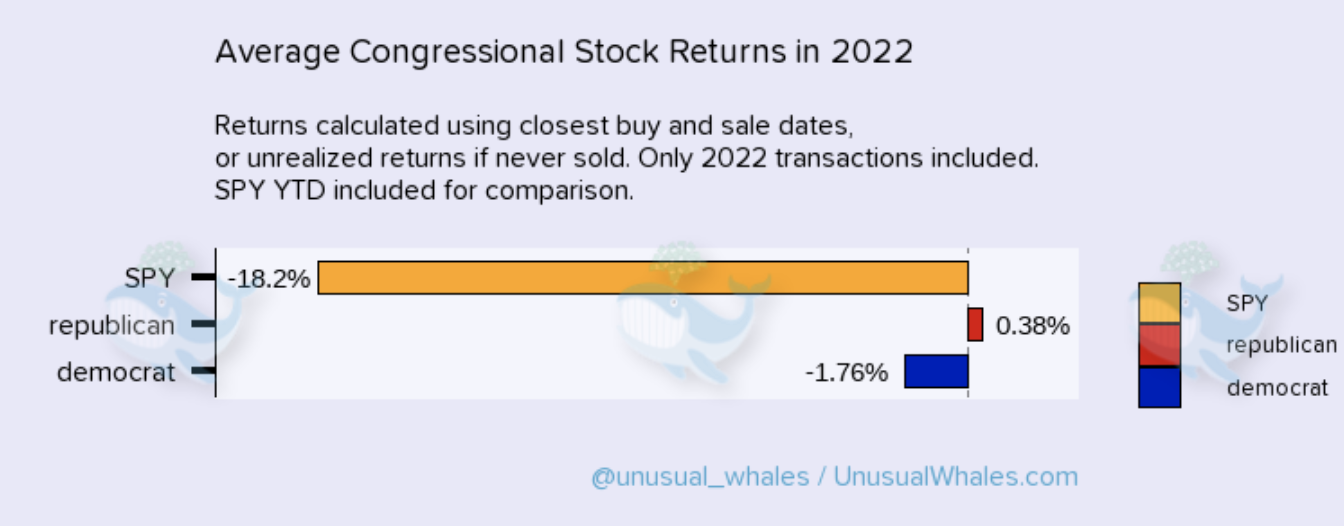This post may contain affiliate links. We may receive compensation when you click on links to those products at no additional cost to you. Read our full disclosure here.
Investing in stocks is one of the best ways to grow your wealth over time. In fact, stocks have historically outperformed other asset classes and have been a fan favorite for many centuries since their inception in 1602. Don’t believe me? Ask what high-net-worth folks own today and you’ll see that stocks are up there on the list. However, many people are still hesitant to invest in stocks because they don’t understand how the stock market works or even just where to start.
In this article, we will provide a comprehensive guide on how to invest in stocks for beginners that will help you understand the basics and hopefully make informed investment decisions.

What are Stocks?
Stocks are units of ownership in a company. When you buy a stock, you are essentially buying a piece of the company, which means you own a percentage of the company’s assets, earnings, and voting rights. This also kind of means you are now a part business owner of a big company, pretty cool right?

Why Do Companies Issue Stock?
Companies issue stock to raise money. When companies want to raise money, they can issue stock to:
- Fund their growth: Companies issue stocks to raise money to fund their expansion, buy other companies, research and development, and other long-term investments.
- Acquiring other companies: Companies may also issue stock as a way to finance the acquisition of other companies. By issuing stock, the acquiring company can offer the shares as payment to the shareholders of the target company.
- Pay-off debt: If a company has borrowed money in the past and wants to pay off its debt, it can issue stocks to generate the necessary funds.
- Improve liquidity: Issuing stocks can provide liquidity to shareholders who want to sell their shares. This allows investors to buy and sell shares more easily, increasing the efficiency of the market.
- Attract top talent: By offering stock options to employees, companies can attract and retain top talent by providing an additional incentive for them to join and stay with the company.
- Enhance public image: Companies that issue stocks can enhance their public image and increase publicity. It can also provide a sense of legitimacy and establish a company as a player in its industry.
The two main stock exchanges in the United States are the New York Stock Exchange (NYSE) and the Nasdaq. Stock prices fluctuate based on supply and demand, and the overall performance of the company.
What is the Stock Market?
The stock market is exactly what it sounds like – a market where people buy and sell ownership in publicly traded companies.
- Imagine you want to start a lemonade stand, but you don’t have enough money to buy all the supplies you need.
- So, you decide to ask interested investors for help by offering them a share of your profits in exchange for their money.
- You decide to head to the “stock market” and market your company there, where some investors agree and give you some money, becoming part-owners of your lemonade stand.
- If your lemonade stand does well and makes a profit, you share that profit with the investors based on how much money they invested.
- This is kind of like how companies sell stocks to raise money and give shareholders a portion of their profits.
Today, the stock market is a place where people can invest in companies they believe in and earn a share of the profits. It’s a place where buyers and sellers come together to trade shares, and where the value of those shares is determined by the laws of supply and demand.
If you want to learn more about the different types of financial markets, check out our article on What are Financial Markets? for a deeper dive into this topic.
Why Invest in Stocks?
Investing in stocks can help you achieve your financial goals in the long run. When you invest in stocks, you have the potential to compound your returns instead of letting your cash sit idle. Historically, stocks have provided higher returns than other investment options, such as bonds or savings accounts, and also have outpaced inflation to protect the value of your money.
See below for the annualized return of the various asset classes and inflation rate from 1990-2022:
| Investment | Expected Annualized Return |
| US Stocks | 12.88% |
| US Aggregate Bonds | 2.00% |
| US Real Estate | 7.90% |
| Gold | 3.28% |
| Inflation | 2.65% |
Source: YCharts
Stocks can generate a return in two main ways:
- Capital appreciation: Refers to the increase in value of a stock over time, which you as a part owner can get to enjoy as well. As the stock price increase, your position increases as well and you can sell it to realize a profit. This type of return can be particularly attractive to investors who are seeking to grow their wealth over the long term.
- Dividends: A distribution of a company’s profits to its shareholders. While not all companies offer dividends, those that do can provide investors with a reliable stream of income.
Investing in stocks also allows you to participate in the growth of the economy, as companies grow and expand, so do their stocks.
What are the Risks of Investing in Stocks?
While returns are good, investing in stocks comes with many risks as well. Here are some of the key risks to consider:
- Volatility risk: Stocks can be volatile, meaning their prices can fluctuate up and down unpredictably. Standard deviation is often the preferred way to measure volatility, as it provides an indication of how much a stock’s price has varied from its average.
- Stocks are typically more volatile than other assets and thus offer a higher expected return as well to compensate investors for the uncertainty in price.
- Market risk: Aka systematic risk. Stock prices can be affected by broader market conditions, such as economic downturns, geopolitical events, and natural disasters.
- For example, if you invested in Apple but the whole market is going down, your Apple stocks may also decrease.
- Company risk: Individual companies can also pose risks to investors. Poor management, scandals, and changes in market conditions can all impact a company’s financial performance and stock price.
- Liquidity risk: This is when you can’t find a buyer or seller for stock, especially for small or thinly traded stocks. This can also mean you may have to buy or sell at an unfavorable price to execute your trade.
- Inflation risk: Inflation can erode the value of an investor’s returns over time, particularly if the rate of inflation exceeds the rate of return on their investments.
- In finance terms, we say that your real rate of return is negative if inflation > investment returns.
- Currency risk: If you invest in stocks of companies based in other countries, changes in exchange rates can impact the value of your investment.
- For example, even though your stocks are doing well, you can still get a negative return if the currency of the asset goes down.
- Interest rate risk: Interest rate changes can impact a company’s profitability and the value of its stock.
- For example, if interest rates rise, borrowing costs for companies increase, which can reduce their earnings and stock prices.
- Political risk: Political events, such as changes in government policies or legal changes, can impact the stock market and individual companies.
- For example, new regulations or trade policies can affect a company’s profitability, which can affect the stock price.
It’s important to remember that investing in stocks involves risk, and there are no guaranteed returns. If someone tells you that they have a way to invest in stocks risk-free, run the other way!
Different Types of Stocks
There are two major types of stocks: common stock and preferred stock.
- Common stocks: This is the most common type of stock. As a shareholder, you are entitled to a portion of the company’s profits through dividends and capital gains. You also have the right to vote on certain company decisions, such as board elections.
- Preferred stocks: Preferred stocks are a type of stock that pays a fixed dividend, usually at a higher rate than common stocks. Preferred stockholders do not have voting rights but have a higher claim than common stockholders on company assets in the event of bankruptcy, and also have priority over common stocks in terms of receiving dividends.
*Since common stocks are what most people invest in, this guide on how to invest in stocks for beginners will be referring to common stocks when we mention “stock(s)”.
Stocks can also be further classified into different categories:
- Size
- Large-cap – Company size larger than $10B
- Mid-cap – Company size $2B – $10B
- Small-cap – Company size $300M – $2B
- Style
- Growth – Companies that are growing fast and that reinvest most profits into the business.
- Value – Undervalued companies that are “cheap” based on fundamental analysis.
- Dividend – Stocks that reward investors with payouts generously
- Sector and Industry
- There are 68 industries within the 11 sectors of stocks.
- Examples of industries: automobiles, mining, food, banks, etc.
- Examples of sectors: Information technology, communication services, utilities, health care, real estate, financials, industrials, consumer discretionary, consumer staples, materials, and energy.
How to Choose Which Stocks to Invest In
Ok great, you liked what you heard and are ready to invest in some stocks. Here’s a problem: there are literally more than 50,000 listed companies in the world so picking stocks that work for you is more than an uphill battle. Here are some different ways to get you started on how to choose which stocks to invest in.
The “Familiar” Approach
If you’re new to investing and feeling overwhelmed by the sheer number of companies to choose from, don’t worry, there’s a simple approach you can take. Start by choosing stocks that you’re already familiar with, like everyday brands such as Apple or Starbucks that you already know and love.
This approach can help you integrate your investments with your life, allowing you to keep a closer eye on how your money is working for you. And who knows, maybe you’ll even discover a new passion for investing as you watch your favorite brands grow and thrive!
By taking this first step, you’ll get a feel for what it means to be a part-owner of a company, and you’ll be well on your way to building a diversified investment portfolio that suits your goals and risk tolerance.
Fundamental Analysis
Fundamental analysis is like going on a first date with a potential partner. You’d want to know everything about them – their interests, their job, their goals – to determine if they are a good match for you. Similarly, fundamental analysis involves digging into a company’s fundamentals, like its financial statements, management team, industry trends, and other factors to determine if it’s a good match for your investment portfolio.
Think of it like this: when you’re buying a house, you don’t just look at the color of the walls or the style of the kitchen. You inspect the foundation, the roof, the plumbing, and the electrical system to make sure the house is structurally sound. Fundamental analysis is like inspecting the foundation of a company to make sure it’s financially sound.
By analyzing a company’s financial statements, you can get an idea of its cash flow, revenue, expenses, debt levels, and profitability. You can also look at the company’s management team to see if they have a track record of success and if they are making strategic decisions to grow the company. You can even analyze industry trends and the competitive landscape to see if the company is well-positioned to succeed in the long term.
Here’s a more in-depth article about How to Research Stocks if you’re interested to learn more.
Investing Strategies
There are various strategies for stock investing, and each can help you narrow down what stocks to invest in. Here are some of the most common investing strategies:
Value investing: Value investors seek out stocks that are undervalued by the market. They look for companies with strong fundamentals, such as low price-to-earnings ratios or high dividend yields, and buy them at a discount. Value investing requires patience and discipline but can potentially yield high returns.
Growth investing: Growth investors focus on companies that have the potential for high growth in earnings or revenue. They are willing to pay a premium for these stocks, believing that the company’s growth will drive up the stock price in the future. Growth investing can be risky, as high-growth companies can be volatile and unpredictable.
Income investing: Income investors focus on stocks that pay regular dividends, providing a reliable income stream. These investors prioritize companies with a history of paying dividends and a stable financial position. Income investing is suitable for investors who prioritize steady income over capital appreciation.
Dollar-cost averaging: Dollar-cost averaging is a strategy that involves investing a fixed amount of money at regular intervals, regardless of market conditions. This approach can help investors avoid the temptation to time the market and reduce the impact of market volatility.
Technical Analysis
Technical analysis is all about reading stock charts and finding patterns to predict where a stock’s price is headed. It is essentially looking at the stock’s price behavior in the past to predict the future.
Technical analysis uses tools and indicators like moving averages, trendlines, and the Relative Strength Index (RSI) to help spot trends and make predictions.
Here’s a quick example of one technical analysis strategy:
- Let’s say you’re looking at a chart of a stock’s price over the past few months.
- You notice that every time the stock hits a certain price level, it bounces back up.
- You draw a trendline to connect those price points, and now you have a visual representation of the stock’s support level.
- If the stock’s price drops down to that level again, you might predict that it will bounce back up again.

One thing to note is that technical analysis is very hard to execute and most beginner traders get burned by it. Most technical analysis indicators are lagging indicators and thus are reactive to price movements that have already occurred. This means that traders using technical analysis may be late to enter or exit a trade, resulting in missed opportunities or losses.
In addition, technical analysis requires a deep understanding of chart patterns, technical indicators, and other technical analysis tools. Without this knowledge and experience, it can be difficult for beginners to accurately interpret the signals and make profitable trades.
The Diversified Approach
Of course, choosing individual stocks isn’t for everyone. It can be time-consuming and requires a lot of research and may not be ideal if you’re just starting to learn how to invest in stocks for beginners. That’s where mutual funds and exchange-traded funds (ETFs) come in.
These are investment vehicles that allow you to pool your money with other investors to buy a bunch of stocks. Mutual funds are actively managed by fund managers, while ETFs are passively managed to track a specific market index.
Both options offer a more diversified approach to investing in stocks so that you’re not actively trying to research the thousands of companies out there and figure out which ones to invest in. Diversification also reduces your portfolio volatility as it spreads your investment across a variety of companies and industries.
This means that if one company or industry is not performing well, your portfolio won’t take as big of a hit. Additionally, diversification can help you achieve more consistent returns over the long term.
While there is still risk involved in investing in mutual funds and/or ETFs, it’s a great option for those who want exposure to the stock market without the time and effort required for individual stock research.
Does Stock Picking Work?
At first glance, stock picking may seem pretty straightforward. You learn how to do some research by reading blog posts like this, find a good company to invest in, and make money right? However, the reality is that stock picking is a difficult and unpredictable task.
According to SPIVA, over a 15-year period ending in December 2022, approximately 93.40% of actively managed funds underperformed the S&P 500. This means that the vast majority of PROFESSIONAL fund managers, who spend their days researching and selecting stocks, underperformed the stock market. Thus, for most investors, getting a diversified portfolio of stocks through ETFs is a better idea.
Furthermore, individual investors who try to pick stocks often fall victim to behavioral biases, such as overconfidence and herd mentality. They may also lack the resources and expertise to conduct proper research and analysis, which can lead to costly mistakes.
This is not to say that individual stock picking is always a losing game. Some investors have had success in selecting stocks, particularly those with a deep understanding of the market and a disciplined approach to investing (shoutout to Warren Buffett).
Or unless you are in congress, whose members somehow have a knack for beating the market. For example, 2022 was a brutal year for most investors but congress didn’t do too shabby:

How to Buy and Sell Stocks
To learn how to invest in stocks for beginners, you need to learn how to buy and sell stocks. There are two ways to do so:
- Brokerage Firms: You can buy and sell stocks directly through a broker. Brokerage firms act as intermediaries between you and the stock market and facilitate the buying and selling for you. They also provide you with access to various investment options and may charge fees for their services.
- Investment Apps: You can also buy and sell stocks through investment apps, such as Robinhood, Webul, and M1 Finance. Most of them are commission free, meaning you can buy and sell stocks for free.
To start buying stocks:
- Open a brokerage account: The first step is to open a brokerage account. Some of my favorite apps are listed in this article. This will give you access to the stock market and allow you to buy and sell stocks Look for a reputable brokerage firm that offers a user-friendly platform and competitive fees.
- You can also buy and sell stocks in retirement accounts like an IRA or Roth IRA for certain tax advantages.
- Fund your account: Once you have opened your brokerage account, you will need to fund it with cash. You can do this by linking your bank account to your brokerage account and transferring money electronically.
- Do your research: Before investing in any stock, it’s important to do your research. Look at the company’s financial health, management team, and competitive landscape to determine its potential for growth and profitability. Use tools like financial statements, news articles, and analyst reports to make informed decisions.
- Place your order: Once you have identified a stock to invest in, you can place your order through your brokerage account. You can choose to buy or sell shares at the current market price or set a limit order to buy or sell at a specific price.
- Monitor your investments: After you have bought stocks, it’s important to monitor their performance. Keep track of the stock’s price movements and any news or events that may impact its value. You can use financial news websites and market data analysis tools to stay informed.
When to Sell Stocks
Knowing when to sell stocks is just as important as knowing when to buy them. There are several reasons why you might want to sell a stock, such as:
- When you achieved your target profit. You may already want to sell stocks that achieved your target return at a profit to lock in the gains and reinvest into other opportunities.
- When the company is overvalued and the expected return of the stock decreased. Read more about how to value a stock here.
- When the company’s financials have deteriorated. This is why it is important to monitor your stocks if you are buying individual companies.
- When you need the cash for other purposes. Just make sure you are aware of the tax implications if you want to sell!
It’s important to have a clear exit strategy in place and to review your portfolio regularly to identify any stocks that are underperforming.
Common Mistakes to Avoid When Investing in Stocks
Many investors make common mistakes when learning how to invest in stocks for beginners, such as:
- Chasing hot stocks.
- Trying to time the market.
- Overtrading.
- Investing in companies they don’t understand.
To avoid these mistakes, you need to:
- Have a clear investment strategy and stick to it.
- Diversify your portfolio to minimize risk and avoid putting all your eggs in one basket.
- Avoid letting emotions drive your investment decisions. Instead, focus on long-term goals and make informed decisions based on research and analysis.
How to Monitor Your Stock Investments
Monitoring your investments is crucial to ensure that your portfolio is performing well and to identify any potential risks or issues. Here are some tips:
- Review your portfolio regularly and keep track of the performance of each stock.
- Most brokerages have a website or app that you can log on to and track your investments. Set alerts to be notified of any news or events related to your stocks.
- Use various tools and resources, such as financial news websites and market data analysis tools, to stay informed about the latest trends and developments in the stock market.
- Join earnings calls and read company reports to stay informed about individual companies in your portfolio. These reports can provide insights into a company’s financial performance, growth prospects, and future plans.
- Consider using a portfolio tracking tool or app, which can help you aggregate and keep track of ALL your investments in real time. I personally use Empower, previously known as Personal Capital to do so.
If you’re uncertain about how to monitor your investments or have questions about your portfolio, consider working with a financial advisor or investment professional. They can provide personalized guidance and help you make informed investment decisions that align with your goals and risk tolerance.
Final Thoughts
Investing in stocks can be a great way to grow your wealth over time, but it requires knowledge, research, and patience. By understanding the basics through this guide on how to invest in stocks for beginners, evaluating potential investments, and monitoring your portfolio regularly, you can make informed investment decisions and achieve your financial goals!
FAQs
How should a beginner invest in stocks?
A beginner should start by educating themselves about the stock market, identifying their investment goals and risk tolerance, and creating a diversified portfolio that aligns with their goals.
It’s also important to regularly monitor their investments and stay disciplined, avoiding impulsive decisions based on short-term market fluctuations.
How much should you invest in stocks for the first time?
The amount you should invest in stocks the first time depends on your financial situation, investment goals, and risk tolerance. It’s generally recommended to start small and gradually increase your investments over time.
What is the 1% rule for stock investing?
The 1% rule for stock investing suggests that you should allocate no more than 1% of your portfolio to any individual stock. This helps to minimize your risk exposure and ensure that your portfolio is diversified.
Is $500 enough to start investing in stocks?
Yes, $500 can be enough to start investing in stocks. However, it’s important to consider your financial situation, investment goals, and risk tolerance before making any investment decisions. Starting small and gradually increasing your investments over time can help you minimize your risk exposure and build a well-diversified portfolio.
How often should I review my portfolio?
You should review your portfolio at least annually. however, if you hold individual stocks, you should review your holdings at least quarterly to catch any material changes that may change your investment thesis.
This post may contain affiliate links. We may receive compensation when you click on links to those products at no additional cost to you. Read our full disclosure here.







